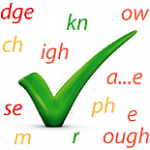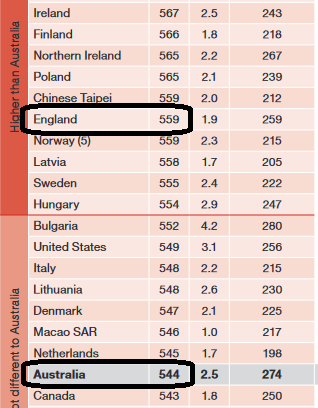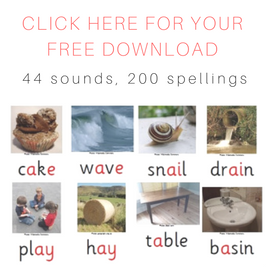Benchmark Assessment: often wrong
0 RepliesIt’s the end of the school year in Australia, so children are getting their end-of-year reports.
Many Australian schools use the American Fountas and Pinnell Benchmark Assessment System (BAS) to evaluate reading skills, but a new American Public Media (APM) report says it fails to identify most struggling readers.
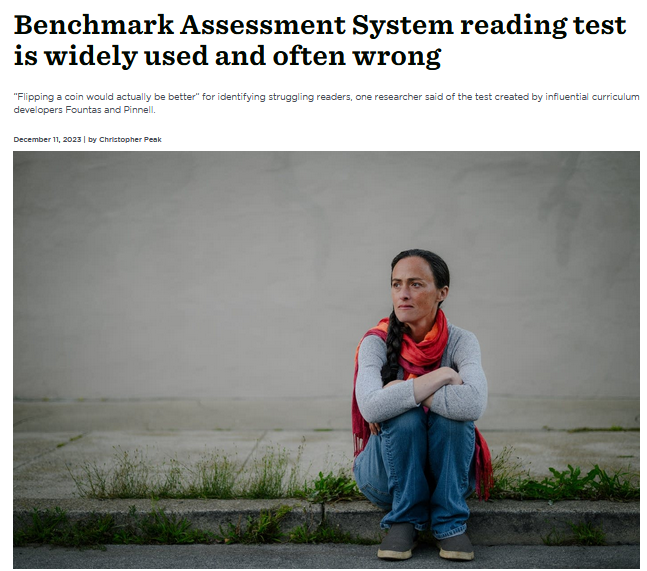
If teachers rely on the BAS results, they will be advising many parents not to worry about their children’s reading skills, though there’s good reason to be concerned.
If you’re in this situation, please seek more reliable and valid assessment. Early intervention is highly effective, and ‘late bloomers’ are more likely to wilt and suffer than catch up.
There are plenty of more cost-effective, efficient, reliable, valid literacy skill assessments available for school use. The excellent, Australian Reading Science in Schools website has an assessment list you can download here. Chances are that teachers using the BAS don’t know about researchers’ adverse findings on it, or good alternatives. Do them a favour, send them the APM report and RSS assessment list.
If your school can’t provide valid, reliable reading/spelling assessment, try asking local Speech Pathologists, Educational and Developmental Psychologists or Specialist Educators for a second opinion. Very young kids can do quite a lot of learning in the summer holidays with good professional guidance and/or by attending programs like our holiday groups. The sooner they catch up with peers, the happier they’ll be in 2024.
Does this child need formal assessment?
0 Replies
It’s the last week of term here in wintry Melbourne, and many parents will be getting school reports saying their child has some reading and/or spelling difficulties, and suggesting further assessment.
Others will be worrying about their child’s skills, but being advised to wait and see if they catch up. Children often don’t catch up, and waiting for them to do so can waste valuable early intervention time.
A full developmental and educational assessment needs to be done by a psychologist, but can be quite expensive, and there are usually long waiting lists. If you think your child might have dyslexia/dysgraphia, please make sure your child does at least six months of high-quality intervention before seeking a diagnostic assessment, as that’s one of the diagnostic criteria for Specific Learning Disorder.
Speech pathologists can assess speech-language related aspects of reading and spelling, and provide recommendations, but again there’s usually a wait (though we have a few appointments available in North Fitzroy in the holidays, contact us here to find out more). Special educators can also assist with many assessments, but again those in the private sector often have long waiting lists, and if they’re school-based, they’re probably about to go on holidays.
If booking an assessment, make sure you find out how long it will take, what it will cover/include and how much it will cost beforehand. You don’t want to spend $1000+ on a 50-page report you don’t really understand, containing so many recommendations that you don’t know where to start.
AUSPELD online screener and parent website
The AUSPELD website has a useful Next Steps Screening Tool designed to help parents work out whether to seek formal assessment and/or intervention for their child.
AUSPELD’s Understanding Learning Difficulties for Parents website also contains great information to help parents understand children’s learning difficulties, and think about what to do and who can help.
Words read accurately in a minute
The number of words a child can read accurately in a minute is a useful litmus test of whether a child may have a reading problem requiring further investigation. In very general terms (see detailed norms here), by the end of Grade 1 (second year of schooling), children should be able to read an age-level text at something like 50-60 words per minute, or one word per second. This should increase to about 80-100 words per minute by the end of Grade 2, and about 110-120 words per minute by the end of Grade 3.
By the end of primary school children should be able to read at around 150 words per minute. This is about a normal conversational speech rate, though of course auctioneers and people in paid political advertisements speak much faster. Our brains like to process language at about conversational speed, and find it harder to comprehend if it’s a lot slower. Try slowing a podcast down to 75% to experience this. It makes me want to throw my phone across the room.
Highly skilled readers can read much faster than people usually speak, up to 240-300 words per minute, though it depends on what they’re reading. A trashy novel is easier than a complex scientific article.
Don’t wait-to-fail
If your child seems to have a problem with reading and/or spelling, please don’t wait to see if they grow out of it. They might not, and reading and spelling are essential skills for school and life success.
Australian phonics screening and funding
0 Replies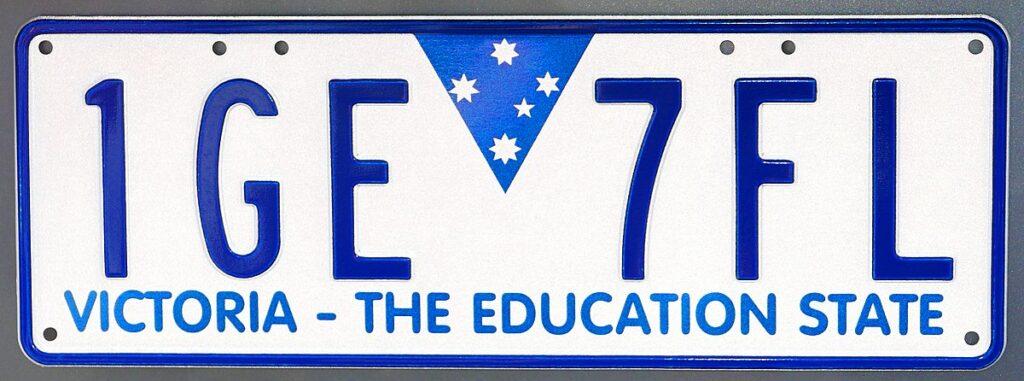
I haven’t blogged for months because of a hard third COVID-and-flu-cancellations winter, staff changes (we still need another speech pathologist to help with the crazy waiting list, click here for the job ad), a complete website rewrite, and a death in the family. Sigh.
However, many blog-worthy things have kept happening in the science of reading/spelling world. Did you see any of the incredible, free, online PATTAN 2022 Literacy Symposium presentations? Do you know about LDA‘s seminars by US phonemic awareness guru Linnea Ehri and an explosion of local talent in Melbourne on 23 October, and Sydney on the 25th? Tickets are here (but may be close to sold out). I’m pinching myself to have the honour of MCing the Melbourne seminar.
A couple of recent local announcements prompted an excellent blog from Pam Snow, which you can read here, and I’ve been thinking about them too.
Victorian Phonics Screening Check
In 2023, all Year 1 students in my state will do a phonics screening test, to check they’re learning to sound out words, not just memorise and guess them. Excellent.
Many schools still actively encourage guessing and memorising by using predictable texts, multicueing/three-cueing/MSV strategies, and rote-learning of high frequency word lists, and assess early literacy with Running Records.
A Running Record is a bit like assessing a car by walking around it kicking the tyres. Smart kids with weak decoding can appear to be reading. Phonics screening is like lifting the bonnet and checking there’s actually an engine, and the previous driver wasn’t just doing a Fred Flintstone.
There is a federally-funded Literacy Hub Phonics Screening Check, but Victoria’s Phonics Screening Check will consist of items added to the existing English Online Interview. Only employees of the Victorian Education Department can access this, so I can’t tell you much about it. Victoria’s phonics test was piloted earlier in the year, so I hope valid and reliable test items were identified to add to English Online.
Are the skills to be tested in the curriculum?
Victoria’s Year 1 phonics test will be administered in weeks 3-7 of Term 1, so children will have little more than Foundation (first year of schooling) knowledge of phonics. The two Foundation Reading and Viewing Phonics and Word Knowledge standards in the Victorian Curriculum set a very low standard:
- Recognise all upper- and lower-case letters and the most common sound that each letter represents (VCELA146)
- Blend sounds associated with letters when reading consonant-vowel-consonant words (VCELA147)
Taken at face value, these might restrict the Victorian Year 1 phonics screening test’s words to CVCs with spellings like ‘run’, ‘hop’ and ‘fig’, and pseudowords like ‘nim’, ‘wep’ and ‘vab’. Most children who’ve been taught well in Foundation can read much longer/harder words than that.
I hope the process of formulating and using this test, and adapting the state curriculum to the new, taking-phonics-more-seriously Australian curriculum, will prompt our Education Department to spell out which phoneme-grapheme correspondences and morphemes are expected to be learnt, at least in each of the first three years of schooling.
For example, will early Year 1 students be expected to read words with up to five sounds e.g. ‘crust’ and ‘spend’? Words with consonant digraphs like ‘sh’, ‘ch’ and ‘th’? Any vowel digraphs? What about inflectional morphemes like jump-jumps-jumped-jumping, or soft-softer-softest, and compound words? At the moment, this is unclear.
Phonics screening elsewhere
After a long push for more emphasis on early phonics in the UK, the Year 1 Phonics Screening Check was first done across England in 2012. Past versions of UK phonics screening tests are freely available online, here are links to the 2022, 2019 and 2018 versions (2020 and 2021 tests were didn’t happen because of the COVID-19 pandemic).
A 2018 National Foundation for Educational Research report said of the UK’s 2016 Progress in Reading Literacy (PIRLS) data for Year 4 students, “The average reading score of students in England was significantly higher than in PIRLS 2006 and 2011, and higher than the majority of other countries.” As you can see from the screenshot of the p5 table of an ACER report on PIRLS 2016 here, English children achieved a Mean score of 559, significantly higher than Australia’s 544. Their extra emphasis on assessing and teaching phonics hasn’t done them any harm.
Two Australian states already screen Year 1 children’s decoding skills. South Australia ran a trial in 2017, then rolled a test out to government schools in 2018, and other schools in 2019. New South Wales had a pilot in 2020 and rollout in 2021. Both tests only seem to be accessible to education department staff, but seem similar to the UK test.
In SA in 2021, 67% of children got the expected 28 out of 40 test words/pseudowords correct. In 2018 only 43% of children got 28 items right. Last year, only 2% of kids couldn’t read any words, down from 4% in 2018. Rural, indigenous and lower socioeconomic kids tended to score below average, more details are here.
In NSW in 2021, 56.7% of students were at or above the expected achievement level, up from 43.3% in the 2020 trial. More details are here. I hope we see a similar early lift in skills in Victoria, and that extra attention and resources for rural, indigenous and disadvantaged kids bring their results closer to average.
Administering and following up the test
Australian Year 1 teachers have been given a couple of days and some training to administer the Year 1 Phonics Check, which is a good start, but more needs to be done to help them make optimal use of the test’s data. Gaps in teachers’ knowledge of scientific approaches to teaching early reading and spelling are now being filled by teachers themselves, in droves, in their own time if necessary. They’re voting with their feet for evidence-based practice, and demanding teaching resources to match. Universities, education departments and publishers should take note, and catch up.
We have a state election at the end of November, and the state Opposition has just promised $220 million for systematic, synthetic phonics training and resources. The downstream benefits of preventing reading failure with such measures are massive, for education, employment, the justice system, health and mental health, you name it.
This election promise is most welcome, and in the context of a ~$90 billion (with a b) state budget, I hope all parties contesting the election will match it. After all, this is The Education State, and all children deserve best educational practice.
The similar-looking word test
43 Replies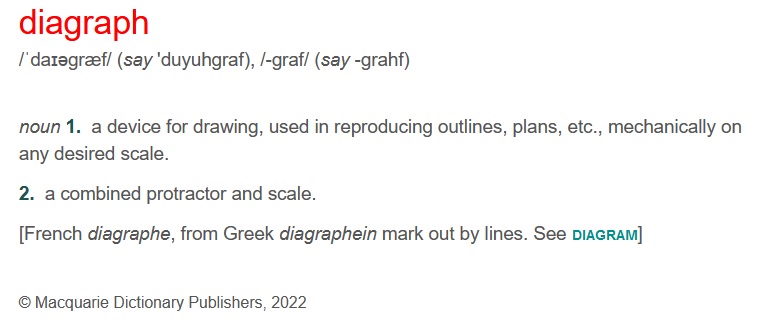
Clients who seem to read well, but spell poorly, are often referred to our service.
Their word-level reading is rarely as good as it seems. While they’re reading connected text, they’re relying on their oral language skills to help them identify the words. Take the supporting context away, by asking them to read lists of words, and they’re usually much less accurate. Their pseudoword decoding/word attack is also often quite weak.
(more…)New low-frequency word spelling test
8 Replies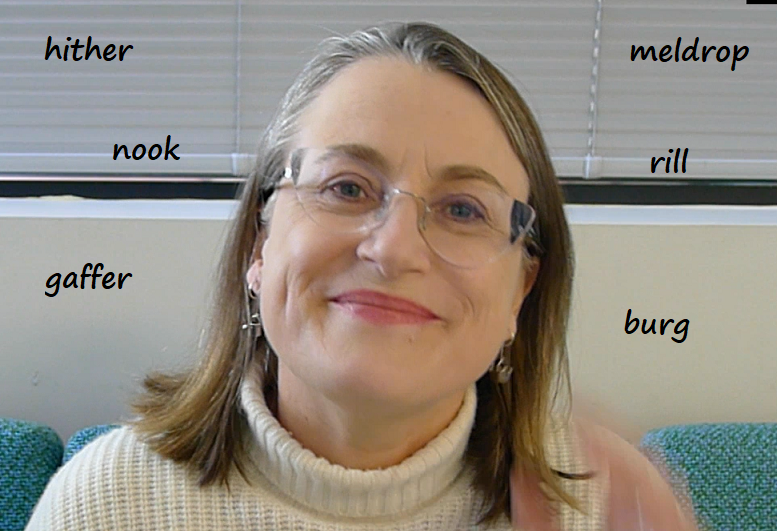
I’ve just finished the new version of the free Spelfabet low frequency word spelling test. Click here to download the file and save it to your computer for printing.
It contains 182 words in five levels, and follows the same teaching sequence as the version 3 Spelfabet workbooks. I hope it’s helpful in deciding where to start in these books, or just in identifying the spelling patterns your learners know, and which need attention.
So you can try the test on yourself first, I’ve filmed myself administering it from the wintry depths of Melbourne’s Lockdown 6.0 (yes, I am masking up and fully AZ vaccinated, the vaccine to get is the one you can get). You just need paper and a pen or pencil for this test, and each level takes between 5 and 15 minutes. Check your answers against the download, or with any walking dictionaries you know, perhaps you’re one.
Please don’t ask kids to do all five levels at once, just start with the level you think they can manage, or Level 1 if they’re in their first year of schooling, Level 2 if they are in their 2nd year and Level 3 if they’re in later primary school years. By mid-primary school most children should be able to have a decent crack at most of these words.
Level 1: 12 minutes
Level 2: 11 minutes. As you can see, my camera’s zoom lens has a mind of its own.
Level 3: 15 minutes (sorry, a bit long, I know)
Level 4: just over 4 minutes (phew!)
Level 5: 10 minutes
If you use the program Sounds-Write and/or the Phonic Books, the teaching sequence in this test is probably familiar. It matches the Dandelion readers Units 1-20, but with extra emphasis on word-building/prefixees/suffixes, then the Dandelion Split Vowel Spellings books (but with more ‘short/long vowels’ and prefix/suffix work and a few extra spellings), then the first set of Extended Code books (one vowel digraph at a time), then the Moon Dogs 3: Vowels sequence (revising one vowel digraph and adding a new one). I’m still working on the later levels, and will add these to the test over time.
The printed test is set out in columns with the target sound/spelling at the left, then the word, then a definition and then an example sentence. The last three levels also include words with analogous spellings e.g. for newly-minted it-word ‘rona‘, the analogy words might be ‘sofa’, ‘coma’ and ‘soda’. I won’t put any of the actual words on the test in this blog post, so they’re all fresh to you when/if you try it.
Please note that this test should not be used as a substitute for formal, standardised tests with norms, percentiles etc., though of course schools could gather data from it and work out their own local norms. It’s intended as an exploratory tool to shed light on what learners know about spelling, and help adults decide what to teach next.
I’d love to know what you think of this test, so please leave any feedback or suggestions in the comments.
Have you signed the Primary Reading Pledge?
1 Replies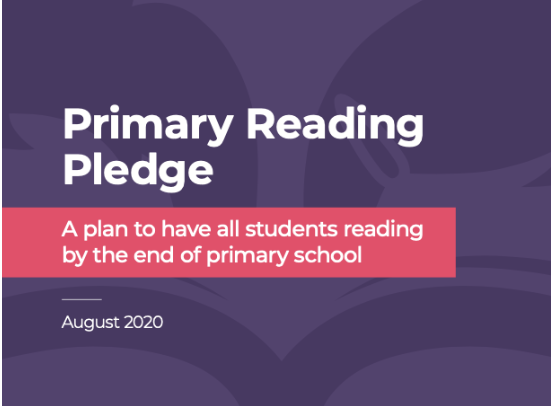
Learning Difficulties Australia, AUSPELD and the Five From Five project have together developed the Australian Primary Reading Pledge.
This seeks to reduce to near zero the number of children who finish primary school unable to read, by providing schools with an evidence-based, easy-to-implement framework for reading assessment and intervention.
Children attend primary school for seven years full-time, yet this year over 50,000 Australian students started secondary school with low literacy skills. This is not a surprise – about the same number of kids were struggling in Year 5 NAPLAN in 2018, but our system lacks effective, systematic follow-up, so they continue to struggle.
It’s time to stop teaching the habits of weak readers in the early years (three-cueing, incidental phonics, memorising high-frequency wordlists, etc) and give teachers the professional development, resources and leadership they need to teach these kids more successfully, persisting for as long as it takes.
You can read the Primary Reading Pledge’s plan to achieve this here, and show your support here.
Dr Jennifer Buckingham of the Five From Five project presented a free webinar for LDA about the Primary Reading Pledge last month, which is still available to view on YouTube, if you’d like more details:
The negative consequences of reading failure for both individuals and society are massive, and with the right intervention there are very few people who can’t learn to read. This is ultimately a social justice issue – kids whose parents can’t afford private tutors or therapists should not be left to fall through the literacy cracks.
I hope you’ll join me in signing the Primary Reading Pledge, and encourage others to do likewise. The list of signatories to date is on the signup page (just scroll down), if you want to check who has already signed. Schools can also sign the Pledge, so please bring it to the attention of school leaders you know.
Why is the Vic Ed Dept promoting a Fountas and Pinnell assessment?
22 Replies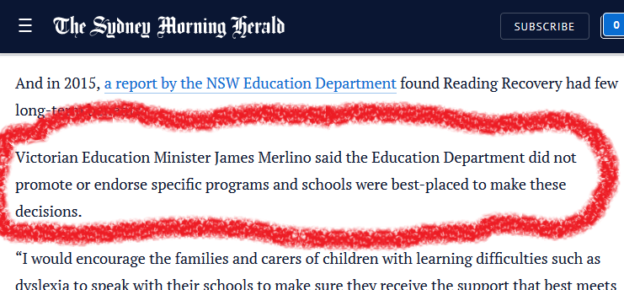
Last year, Victorian Education Minister James Merlino said the Education Department did not promote or endorse specific programs, and schools were best-placed to make these decisions.
This year, the Victorian Education Department is inviting schools in the North-East region to apply for up to $2000 to be spent on either Fountas and Pinnell or PAT Reading assessments, or a choice of three maths assessments:
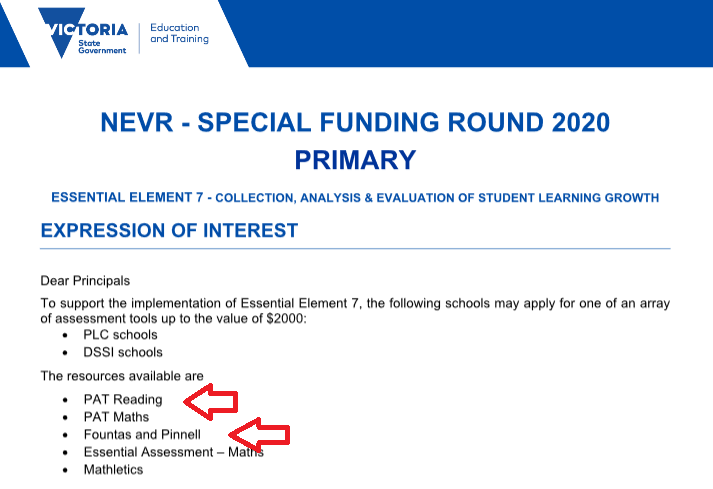
The extra funds and emphasis on data-driven instructional decision-making are welcome, but not if they help teachers gather data on how well children can memorise and guess words, or identify children who are struggling with reading comprehension, without clarifying why (decoding? language comprehension? both?).
I’m no expert on mainstream educational assessments for typically-developing older students, but literacy assessments for beginners and strugglers (such as the ones listed here) should assess the skills that matter most for learning to read and spell.
These include phonemic awareness and letter knowledge in beginners, and phonological memory, rapid automatised naming, word and pseudoword reading and spelling in strugglers. These assessments can identify word-level reading/dyslexia-type difficulties, and thus powerfully inform effective instructional decision-making.
Children who seem to have oral language comprehension problems, which also affect reading comprehension, should be referred to a speech pathologist. Children whose comprehension problems arise from pedagogy that prioritises form over content need their teachers to read The Knowledge Gap by Natalie Wexler.
I have only once administered a Fountas and Pinnell assessment, and it left me scratching my head. I just don’t get the whole balanced literacy/guided reading headspace, which has its roots in the now-debunked idea that reading is a psycholinguistic guessing game.
You might already have watched the US Reading League video of psychologist Steve Dykstra unpacking the statistics in the “gold standard” study on Fountas and Pinnell’s Leveled Literacy Intervention program, showing the program was ineffective, though since most teachers don’t know how to read the statistics, they believe the marketing materials, and keep buying it. This doesn’t exactly build my confidence in the validity or reliability of Fountas and Pinnell assessments.
On the assessment page of the Fountas and Pinnell website, you’ll see that the Benchmark Level Assessment assesses “students’ independent and instructional reading levels according to the F&P Text Level Gradient™“. The last time I looked, this gradient did not reflect the sequence of sounds, spelling patterns and word parts being taught in literacy lessons.
Fountas and Pinnell books for beginners are predictable/repetitive texts, which don’t simplify spelling patterns, and thus tend to encourage children to memorise and guess words, not decode them. I’d be (pleasantly) surprised if their assessments don’t reflect the same logic.
The PAT is the other reading test North-East region schools are currently allowed to buy with this new funding. The Australian Council for Educational Research sells the PAT tests, and its website says that the “Progressive Achievement Tests in Reading assess students’ reading comprehension skills, vocabulary knowledge and spelling”. It doesn’t say anything about word-level reading or phonemic awareness.
The PAT Reading test might be just what schools in the North-East region most need right now, but it might not be. Schools teaching children phonemic awareness and systematic, explicit phonics, and with a strong Response To Intervention approach, are very likely to need other assessments to document the progress of some students, for good, scientifically-based reasons.
Education Minister James Merlino should clarify that he meant what he said last year, and let schools propose other valid, reliable assessments for purchase with this additional funding. Taxpayers’ money should only be spent on valid, reliable assessments that are consistent with current scientific knowledge about how children learn to read and spell.
